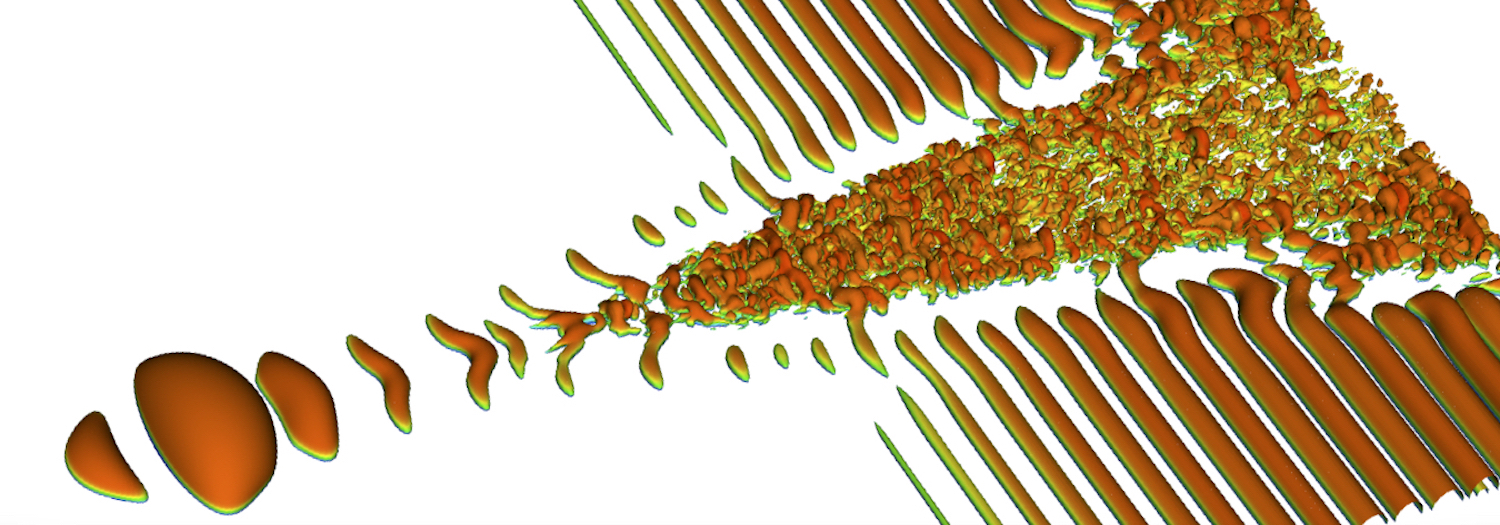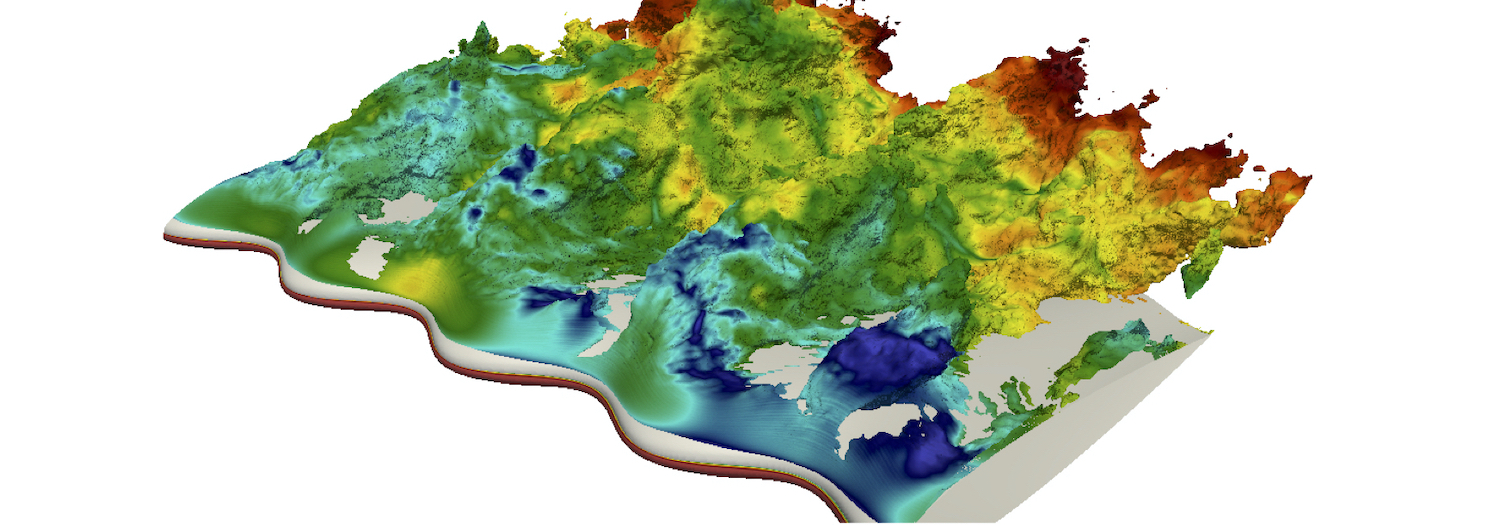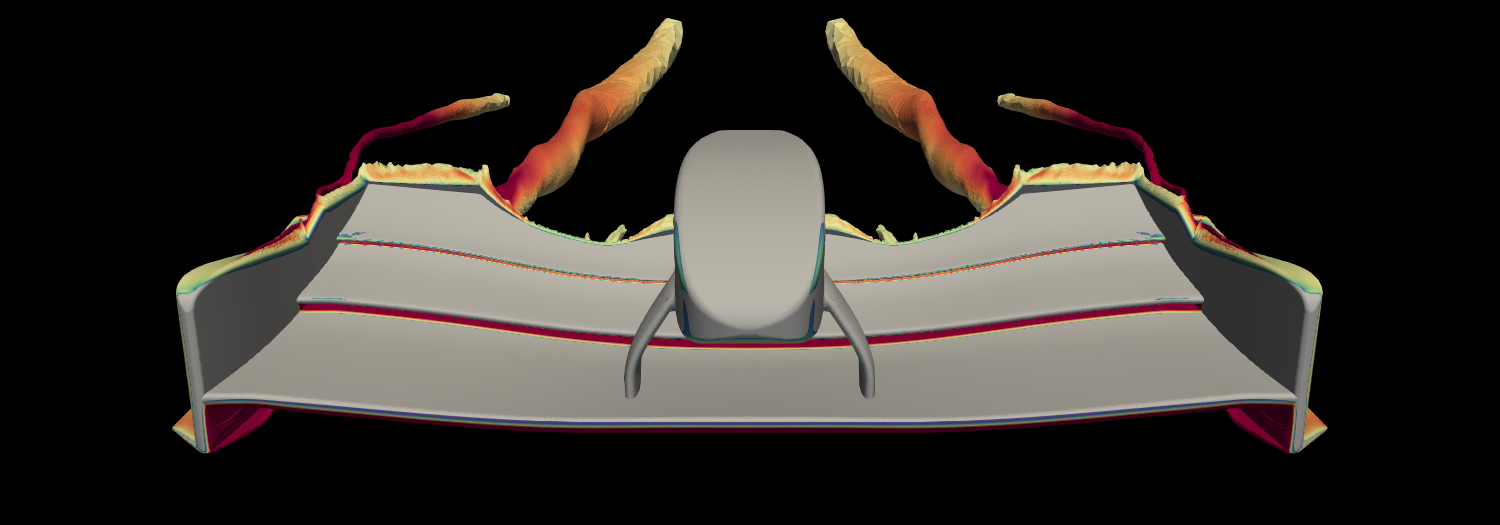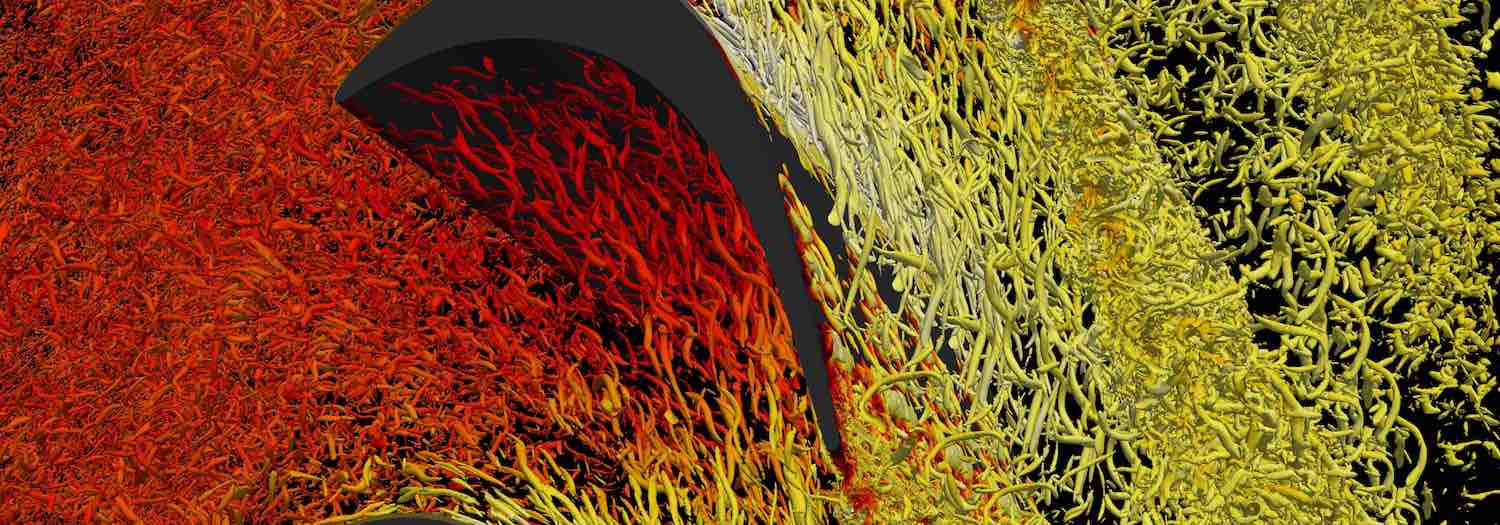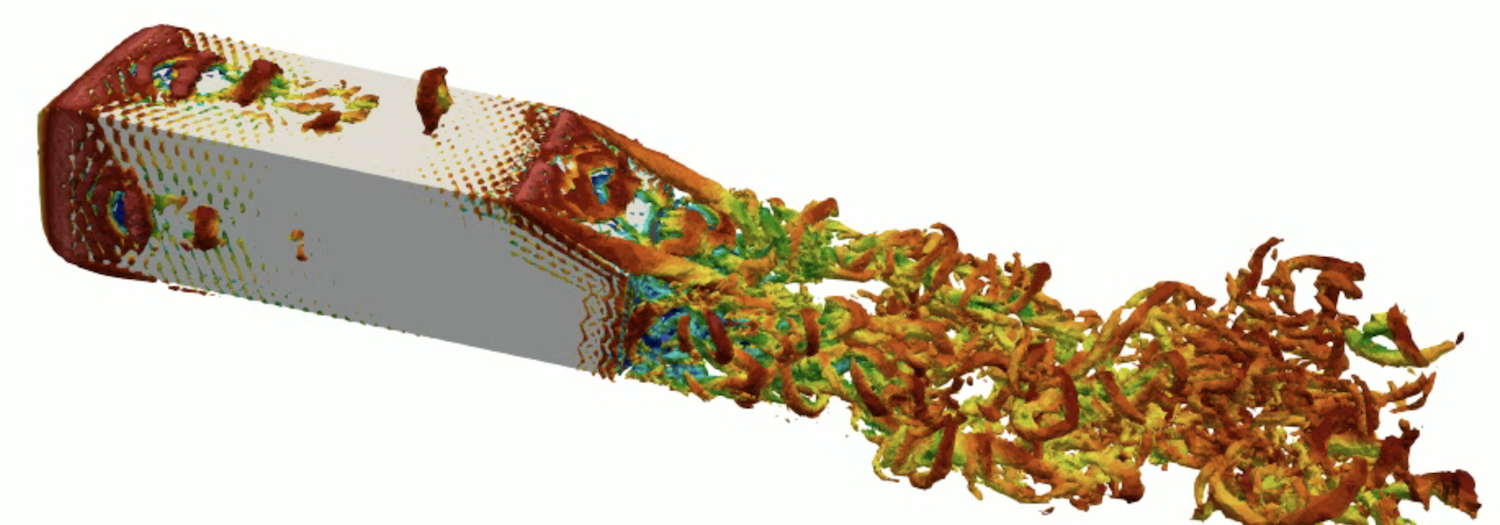Automotive and Motorsport
The use of CFD simulations to predict vehicle’s aerodynamic behaviour is a common practice in the automotive industry nowadays. With recent the advances both in numerical methods and computational power, CFD has become an essential tool for robust and efficient aerodynamic development of new automotive projects.
Present industrial CFD codes are based on a low-fidelity Reynolds-Averaged Navier- Stokes (RANS) approach to simulate the mean effects of turbulence. This method approximates the near wall turbulence by wall functions to reduce the computational cost since it is not necessary to resolve the turbulent flow in the boundary layer. However, for highly time dependent situations such as when analyzing flow around the wheels, where turbulence must be directly resolved rather than modeled, more accurate techniques must be employed. High-fidelity techniques require many more degrees of freedom than classical techniques for an accurate solution.
Among scale-resolving solutions applied to automotive flows, Large Eddy Simulations (LES) still pose a challenge due to requirements and knowledge on its setup and required computational power to reach a converged solution. High-order methods tend to scale very well on emerging HPC architectures and their exponential convergence properties allow computation of a solution with less degrees of freedom than traditional techniques. The high-order spectral/hp element method is rising as a reliable alternative to bridge this gap, allowing high-fidelity CFD simulations on automotive geometries based on under-resolved Direct Numerical Simulations (uDNS) solutions.
Main research topics in this field are:
-
High-fidelity uDNS simulations of automotive bluff bodies and full vehicles
-
Complex automotive flow phenomena
-
Application of high-fidelity simulations to Motorsport cases
SherwinLab also has a long-time research partnership with McLaren Racing and McLaren Automotive.
